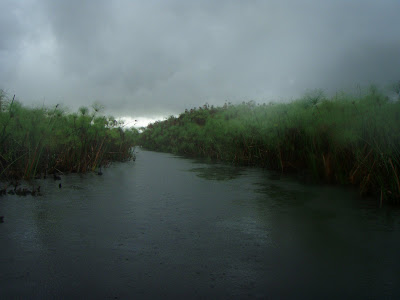
My morning began with what would be my only run of the trip. Kari and Zach accompanied me around our gated Safari hotel. We then took a tour of Windhoek (Namibia's capital)-seeing the Parliament and its beautiful gardens,
Alte Feste (National Museum of Namibia and its oldest surviving building from 1890),
Kaiserliche Realschule (first German primary school that opened in 1909), a few churches, and browsing through a local supermarket (seeing
mealie,
litchie, and
guava- 3 foods which I had read a lot about in
Kaffir Boy). We then continued on our bus from Windhoek to the
Namib Desert where the paved roads turned to dirt and the all the green turned to brown. The vast openness was a nice change from the enclosed traveling vehicles I had been in for the last hours. The first sights of animals were exciting- baboons,
oryx,
kudu, etc. We stopped for a picnic lunch as soon as we could find shade- which could on any day take miles. This
certain area of the desert we were in for the next few days had only received 10mm of rain since last May (on an average of 300mm per year)! From here, I can describe our traveling through the
Spreethoogte Pass as absolutely wonderful- the opened windows allowing a warm breeze to blow, the sun to blaze in causing sweat to gather between my legs and the seat, the smell of dust particles from the disturbed dirt, and my eyes to see the picturesque views of the endless desert. We were really here, in the desert- nothing but us, the land, and the animals. Finally we came to civilization called Solitaire, consisting of a gas station, small restaurant, and lodge (all connected together). We paused for a fuel stop and to taste its supposedly "world famous" apple pie. Moving on across the arid plain with its dried riverbeds, we arrived at
Sesriem Camp. At dusk, we took a walk around to watch the sun sink over the mountains (see picture). Dinner was cooked over the fire- cucumber and pickle salad, white sweet potatoes, and a pasta with meat sauce. Jackals came really close scourging for food. Sarah and I hopped in our tent, thinking I was tired- little did I know that I would not sleep due to a combination of animals noises, jet lag, and a scare that scorpions were resting under my sleeping bag.











.jpg)



.jpg)